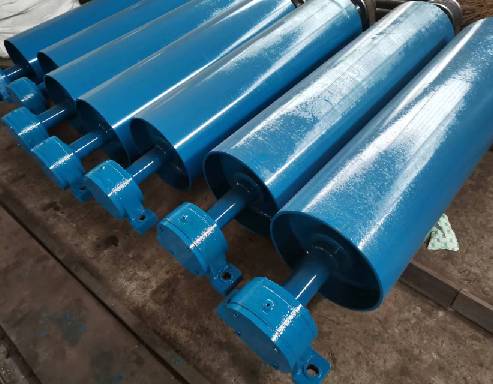 Afrikaans
Afrikaans  Albanian
Albanian  Amharic
Amharic  Arabic
Arabic  Armenian
Armenian  Azerbaijani
Azerbaijani  Basque
Basque  Belarusian
Belarusian  Bengali
Bengali  Bosnian
Bosnian  Bulgarian
Bulgarian  Catalan
Catalan  Cebuano
Cebuano  Corsican
Corsican  Croatian
Croatian  Czech
Czech  Danish
Danish  Dutch
Dutch  English
English  Esperanto
Esperanto  Estonian
Estonian  Finnish
Finnish  French
French  Frisian
Frisian  Galician
Galician  Georgian
Georgian  German
German  Greek
Greek  Gujarati
Gujarati  Haitian Creole
Haitian Creole  hausa
hausa  hawaiian
hawaiian  Hebrew
Hebrew  Hindi
Hindi  Miao
Miao  Hungarian
Hungarian  Icelandic
Icelandic  igbo
igbo  Indonesian
Indonesian  irish
irish  Italian
Italian  Japanese
Japanese  Javanese
Javanese  Kannada
Kannada  kazakh
kazakh  Khmer
Khmer  Rwandese
Rwandese  Korean
Korean  Kurdish
Kurdish  Kyrgyz
Kyrgyz  Lao
Lao  Latin
Latin  Latvian
Latvian  Lithuanian
Lithuanian  Luxembourgish
Luxembourgish  Macedonian
Macedonian  Malgashi
Malgashi  Malay
Malay  Malayalam
Malayalam  Maltese
Maltese  Maori
Maori  Marathi
Marathi  Mongolian
Mongolian  Myanmar
Myanmar  Nepali
Nepali  Norwegian
Norwegian  Norwegian
Norwegian  Occitan
Occitan  Pashto
Pashto  Persian
Persian  Polish
Polish  Portuguese
Portuguese  Punjabi
Punjabi  Romanian
Romanian  Russian
Russian  Samoan
Samoan  Scottish Gaelic
Scottish Gaelic  Serbian
Serbian  Sesotho
Sesotho  Shona
Shona  Sindhi
Sindhi  Sinhala
Sinhala  Slovak
Slovak  Slovenian
Slovenian  Somali
Somali  Spanish
Spanish  Sundanese
Sundanese  Swahili
Swahili  Swedish
Swedish  Tagalog
Tagalog  Tajik
Tajik  Tamil
Tamil  Tatar
Tatar  Telugu
Telugu  Thai
Thai  Turkish
Turkish  Turkmen
Turkmen  Ukrainian
Ukrainian  Urdu
Urdu  Uighur
Uighur  Uzbek
Uzbek  Vietnamese
Vietnamese  Welsh
Welsh  Bantu
Bantu  Yiddish
Yiddish  Yoruba
Yoruba  Zulu
Zulu Exploring the Importance of Idler Rollers in Efficient Belt Conveyor Systems for Material Handling
Idler Rollers for Belt Conveyors An Essential Component for Efficient Material Handling
Belt conveyors are a critical component in various industries, facilitating the efficient transport of materials ranging from grains to heavy machinery parts. At the heart of every belt conveyor system lies a crucial piece of hardware the idler rollers. These seemingly simple components play a vital role in the performance and longevity of conveyor systems. Understanding their function, types, and maintenance can greatly enhance the efficiency of any material handling operation.
Function of Idler Rollers
Idler rollers support the weight of the conveyor belt and the material being transported. They are strategically placed along the conveyor's length to provide stability, reduce friction, and guide the belt. Without idler rollers, the belt would sag under heavy loads, leading to increased wear and tear, potential misalignment, and reduced overall efficiency. Idler rollers also contribute to the smooth operation of the conveyor, minimizing vibrations and ensuring that the material moves seamlessly from one point to another.
Types of Idler Rollers
Idler rollers come in various designs, each suited for specific applications and environments. The most common types include
1. Flat Idlers These are the standard type, providing a flat surface for the belt to rest on. They are used primarily in areas where the belt runs straight and where heavy loads need to be supported.
2. Garland Idlers Designed to navigate curves and corners, garland idlers consist of multiple rollers that can adapt to changes in belt direction. This type is essential for conveyor systems that traverse complex layouts or need to negotiate tight spaces.
3. Training Idlers These idlers help maintain the belt's alignment, preventing it from drifting off course. They are typically found at crucial points in the conveyor system, ensuring that the belt operates within the intended path.
4. Impact Idlers As materials are loaded onto the belt, impact idlers provide increased support to absorb the shock of heavy loads. This is vital for protecting the belt and the structure of the conveyor from premature wear.
idler rollers for belt conveyors

5. Return Idlers Found on the underside of the conveyor, return idlers support the belt as it returns to the loading point, ensuring a smooth operation throughout the entire cycle.
Maintenance of Idler Rollers
To ensure optimal performance, regular maintenance of idler rollers is essential. This involves
- Inspection Routine checks for wear and alignment should be conducted. Any signs of damage such as cracks, bent frames, or worn bearings could compromise the function of the conveyor system.
- Cleaning Debris and material build-up around idlers can hinder their operation. Regular cleaning helps maintain a smooth run and prevents unnecessary strain on the rollers.
- Lubrication Properly lubricating the bearings of idler rollers reduces friction and wear, extending the service life of the components.
- Replacement Timely replacement of worn or damaged rollers is critical to prevent larger issues that could lead to conveyor downtime and operational inefficiencies.
Conclusion
In summary, idler rollers are indispensable components of belt conveyor systems, directly affecting their efficiency and operational reliability. With various types designed for different applications, understanding these components enables industries to make informed decisions regarding their equipment. Through regular maintenance and timely replacements, companies can ensure that their belt conveyor systems remain in optimal condition, facilitating the smooth and efficient flow of materials essential for their operations. As industries continue to evolve, idler rollers will undoubtedly remain a fundamental aspect of material handling solutions.
-
Revolutionizing Conveyor Reliability with Advanced Rubber Lagging PulleysNewsJul.22,2025
-
Powering Precision and Durability with Expert Manufacturers of Conveyor ComponentsNewsJul.22,2025
-
Optimizing Conveyor Systems with Advanced Conveyor AccessoriesNewsJul.22,2025
-
Maximize Conveyor Efficiency with Quality Conveyor Idler PulleysNewsJul.22,2025
-
Future-Proof Your Conveyor System with High-Performance Polyurethane RollerNewsJul.22,2025
-
Driving Efficiency Forward with Quality Idlers and RollersNewsJul.22,2025





























